Values Earned ≡
Recognised and honoured with a list of prestigious awards and certificate of excellence

Driving Force ≡
High profile and award-winning leadership, author of award-winning software applications

Helping Hand ≡
Helping hand to the success of 1st prepaid metering of the nation via integration services

Nation First
Pridefully serving the nation, worked for the Govt of India, with IT Solutions and IT Services

Industry.4.0.in
Gps Gprs Gsm Cdma Sms, Connected Devices, Kiosk & IoT Solutions, Scalable Designs

Affordable Zone
Believe us, despite of the all worthy achievements, we are still an affordable partner
Embedded System Technologies
Serial Interfaces & Protocols
Serial Interface is a data channel that transfers digital data in a serial fashion: one bit after the other over one wire or fiber. Serial interfaces may have multiple lines, but only one line is used for data. The other lines are used for control.
Serial communication is the process of sending data one bit at a time, sequentially, over a communication channel or computer bus. This is in contrast to parallel communication, where several bits are sent as a whole, on a link with several parallel channels.
Serial communication is used for all long-haul communication and most computer networks, where the cost of cable and synchronization difficulties make parallel communication impractical. Serial computer buses are becoming more common even at shorter distances, as improved signal integrity and transmission speeds in newer serial technologies have begun to outweigh the parallel bus's advantage of simplicity (no need for serializer and deserializer, or SerDes) and to outstrip its disadvantages (clock skew, interconnect density).
There are a list of Interfaces / Ports acts as an integrated circuit or a part of it, that uses a variety of communication protocols:
Universal Asynchronous Receiver / Transmitter
UART is a piece of computer hardware that translates data between parallel and serial forms. UARTs are commonly used in conjunction with communication standards such as EIA, MDIO, SMBus, ModBus, IR, RS-232, RS-422 or RS-485. The universal designation indicates that the data format and transmission speeds are configurable. The electric signaling levels and methods (such as differential signaling etc.) are handled by a driver circuit external to the UART. A UART is usually an inpidual (or part of an) integrated circuit used for serial communications over a computer or peripheral device serial port. UARTs are now commonly included in microcontrollers. Many modern ICs now come with a UART that can also communicate synchronouslyInter Integrated Circuit
I2C is a multimaster serial single-ended computer bus invented by the Philips semiconductor pision, today NXP Semiconductors, and used for attaching low-speed peripherals to a motherboard, embedded system, cellphone, or other digital electronic devices.Local Interconnect Network
LIN is a serial network protocol used for communication between components in vehicles. The need for a cheap serial network arose as the technologies and the facilities implemented in the car grew, while the CAN bus was too expensive to implement for every component in the car.Serial Peripheral Interface
SPI bus is a synchronous serial data link, a de facto standard, named by Motorola, that operates in full duplex mode. Devices communicate in master/slave mode where the master device initiates the data frame. Multiple slave devices are allowed with inpidual slave select lines. Sometimes SPI is called a four-wire serial bus, contrasting with three-, two-, and one-wire serial buses. SPI is often referred to as SSI (Synchronous Serial Interface).Universal Serial Bus
USB is an industry standard developed in the mid-1990s that defines the cables, connectors and communications protocols used in a bus for connection, communication, and power supply between computers and electronic devices.Controller Area Network
CAN is a vehicle bus standard designed to allow microcontrollers and devices to communicate with each other within a vehicle without a host computer. CAN bus is a message-based protocol, designed specifically for automotive applications but now also used in other areas such as aerospace, maritime, industrial automation and medical equipment.General Purpose Input / Output
GPIO is a generic pin on an integrated circuit whose behavior (including whether it is an input or output pin) can be controlled (programmed) by the user at run time. GPIO pins have no special purpose defined, and go unused by default.Real Time Clock
RTC is a device clock (most often in the form of an integrated circuit) that keeps track of the current time. Although the term often refers to the devices in personal computers, servers and embedded systems, RTCs are present in almost any electronic device which needs to keep accurate time.
SOURCE: INTERNET
